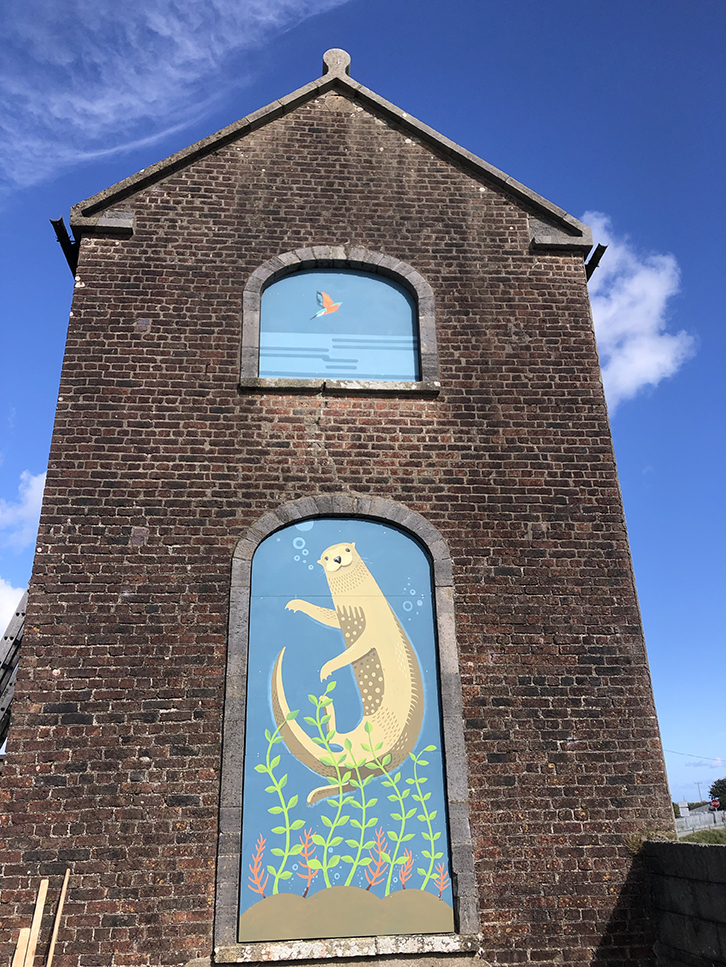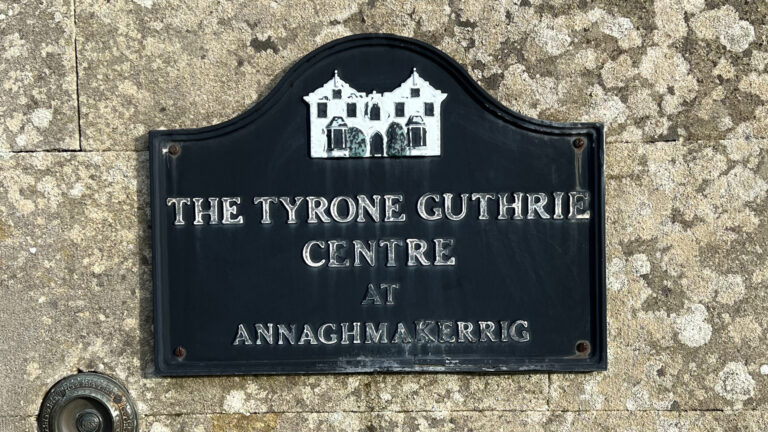Illustrating nature, homage to a wild place
The place I most often go to commune with the wilder side of nature is within walking distance of my front door. When I was approached to collaborate on a project that involved the preservation of a building situated in that wild space, I jumped at the opportunity. It would mean leaving the static comfort of my digital realm to make analogue, large-scale images. I was excited by the physicality and spontaneity of applying paint onto wooden panels, to see my illustrations displayed in an outdoor context.
Just ten minutes away are the South Sloblands, charmingly referred to as “the slob”; a term derived from Irish, meaning slab, mud or mire. The slob is 2,000 acres of privately owned farmland, reclaimed from Wexford Harbour circa 1846. A long embankment separates salt water from fresh water, mudflats from arable land. Here, stepped below sea level, the man-made, micro-managed landscape is juxtaposed with a unique wildlife refuge. The great plains of horizontally stretched fields are intensively farmed. Scant attention is given to regenerative practices, with monoculture crops taking precedence over biodiversity. Yet nature has gained a foothold in this place. An important habitat for one of Europe’s rarest birds, it is a haven for overwintering Greenland White-Fronted Geese. In mid-October, flocks of geese and other wild fowl species arrive in large numbers. On the reed-fringed lake, surrounding fields and wetlands, they find plenty of food and space to thrive. Another crucial enticement for the geese is the sense of security afforded by a general lack of humans on the lowlands.
Many years ago, before I returned to my hometown, I lived in a valley at the base of the Swiss Alps. The mountains loomed large like a circle of watchful giants. It had its own spectacular beauty, but my heart ached for the open spaces of home. The wide expanse of sky and sea, the rippling cry of a curlew, the plaintive conversations of waders at the tideline. On my return, I persuaded family members to let me live in the old pumping station. The pump is the heart of the sloblands. When water levels on the slob reach a critical level, a pump automatically engages to remove it from the land out into a tidal canal. A modern electric pump is now employed to do this. The space in the building, which formerly housed the older, steam-operated mechanism had been converted to living space by my grandfather in the ‘60s. It became my home for seven glorious years.
During that time I wandered at my leisure. It wasn’t long before Minnie, a stray Pattersdale terrier, joined me on my walks. My faithful, never-forgotten companion and I heard otters whistling; we saw them play rollabout and fish in the canal at dusk. We stood at the sea wall under a torrent of screaming swifts. We watched the touchdown of geese, listened for the trumpeting of Whooper Swans on a still night, the pig-like squeal of a Water Rail among the reeds. I spotted a silver, moonlit trail meandering across land from fresh water to the salty estuary canal; eels on their mammoth journey back to the spawning grounds of the Sargasso Sea.
Freddie, a lively mongrel of corgi extraction, now follows in Minnie’s paw steps. As I live not 800 meters from my old tramping ground, we regularly amble down for a walk. Each visit is like meeting with an old friend. On our most trodden paths, I scan the grass verges for newcomers and greet the familiars – wild carrot, agrimony, knapweed, the wind-swept hawthorns. I keep an eye out for that dizzy blur of jade and amber; a kingfisher sweeping up the canal. Passing my old place of residence, its gradual degradation never fails to yank at the heartstrings. Since moving out of the pumphouse almost 20 years ago, the building has fallen into disrepair. Every pane of glass on the beautiful metal-framed, oval-topped windows has been wantonly smashed. Past efforts to board it up have long since succumbed to weathering, scattering shards of glass and crumbled plywood on the ground at its feet. Built 175 years ago, the finely proportioned, redbrick house not only offered shelter for me and others before me, but it also has older, wider stories to tell. Stories of significant social and industrial history that the slob owners and stakeholders feel compelled to preserve.

When it was decided to erect boards on the window openings to protect the interior from further decrepitude, it was fitting that I be a part of that project. Illustrating the boards allowed me to pay homage to a place that held me safe and brought me closer to nature. More importantly, in depicting the wildlife that finds sanctuary in these unique wetlands lies an acknowledgement that we should never become too complacent with the factors around us that could so easily affect this situation.
See more
Many thanks to Irish Rail for their part in supporting the project. Much of the work is visible from the train on the rail journey of Rosslare to Wexford->Dublin

